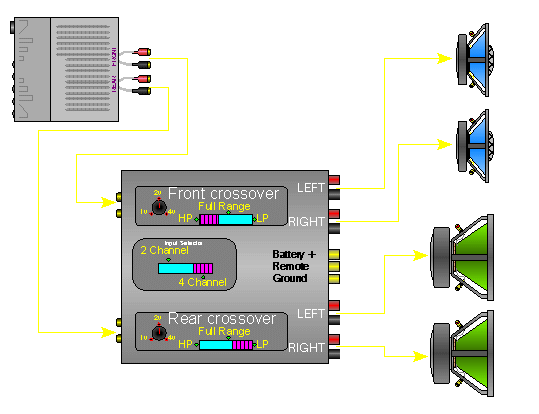
There are many ways to installing subwoofers mids and amplifiers. The idea is to match impendance between subwoofers, mids and amplifiers to maximise their power capabilities. While not totally inclusive, the following diagrams should be helpful in determining which wiring option will work best for you.
NOTE: Some low-impedance sub-woofer system diagrams are included. In order to take advantage of the higher power output of these systems, your amplifier must be capable of driving loads as low as one ohm per channel. Attempting to drive a load lower than what your amp was designed to handle will lead to overheating and possible damage to your amp and subs.
Single Voice Coil (SVC) or Dual Voice Coil (DVC): If your component sub-woofer has 4 wiring terminal posts, it’s a DVC. If it has 2 terminals, it’s an SVC. Sub-woofer voice coils come in 2-ohm, 4-ohm, and 8-ohm impedance.
Impedance: Impedance is the amount of electrical resistance a sub puts up against an amplifier’s output. A sub’s impedance is often printed on its magnet. When you wire dual voice coils and multiple subs together, the resulting total impedance is not always simple to figure out or practical to use.
Amplifiers: An amplifier puts out more power to a low impedance sub than it does to a higher impedance sub. But not all amplifiers can drive low impedance systems safely. Refer to your amp manufacturer or owner’s manual to determine whether or not it can handle a low impedance load.
Bridged mode: Bridging an amplifier combines two of its channels into one, to get more power. The disadvantage of bridging is that bridged channels can’t drive impedance loads as low as they can when unbridged.
Wires: All the wires depicted in the Sub-woofer Wiring Diagrams are speaker wires. For wiring sub-woofers, we recommend using wires of 12- to 14-gauge in size.
